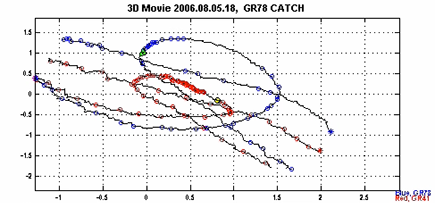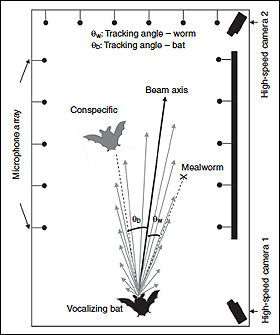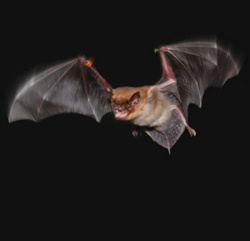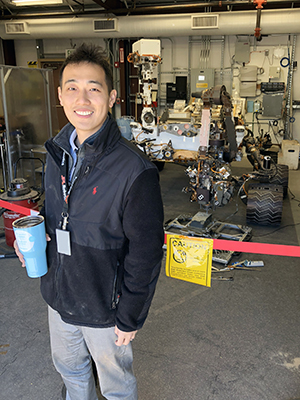News Story
ISR postdoc Chen Chiu wins outstanding paper prize
ISR postdoctoral researcher Chen Chiu is the winner of the 2010 Journal of Experimental Biology Outstanding Paper Prize as the lead author of an article examining competition among bats published in the October 2010 issue of the prestigious journal.
“Effects of competitive prey capture on flight behavior and sonar beam pattern in paired big brown bats, Eptesicus fuscus” explores the strategies bats use to track and catch prey—and to track each other—when they are competing with other bats.
In addition to Chiu, the authors included Puduru Viswanadha Reddy from the Department of Econometrics and Operations Research at Tilburg University in the Netherlands, Auditory Neuroethology Laboratory Research Assistant Wei Xian, Professor P.S. Krishnaprasad (ECE/ISR) and Professor Cynthia Moss (Psych/ISR).
The prize was introduced in 2004 in memory of Bob Boutilier and is given to the young scientist who made the greatest contribution to the winning paper. Its purpose is to encourage young scientists. JEB Editor-in-Chief Hans Hoppeler noted, "This study is exceptional for its use of cutting edge technology and data analysis to study a behaviourally complex situation."
Chiu joined Cynthia Moss's Auditory Neuroethology Laboratory as a Ph.D. student in 2002 after graduating from the National Taiwan University with a BSc in Zoology. "I came to Cindy's lab because I am interested in bats and I wanted to learn more about their echolocation and flight behaviour," Chiu said. She earned her Ph.D. in the Neuroscience and Cognitive Science (NACS) program in 2008 and became an ISR postdoctoral researcher.
In the lab, Chiu was able to use specialized facilities that allow for the reconstruction of the bat's flight path in 3D combined with sound recordings that allow us to determine where the sound beam is directed as well as the characteristics of the calls. As she pursued her Ph.D., Chiu began a series of studies looking at the vocal and flight behaviours of bat pairs competing for prey.
"She made the discovery that often times one bat in this situation would go silent," recalled Moss, who published the discovery that bats sometimes stop vocalizing to avoid jamming with Chiu and Wei Xian in PNAS in 2008 (Chiu et al., 2008Go). Continuing the work, Chiu became interested in how dueling bats track each other as they compete to catch prey. Noticing that one dominant bat usually caught the target and that the trailing bat often outmaneuvered the leader in the closing moments, Chiu began analyzing the call patterns of the dueling animals to find out how they tracked each other.
"We animate the data so we can create a video of the bat's flight path and play the corresponding sounds that the bat is producing at any moment in time," Moss said. "These animations help reveal patterns of results that are difficult to extract from static displays of the data."
Painstakingly analyzing hundreds of bat "dogfights" and converting them into animations, Chiu teamed with P. S. Krishnaprasad and Puduru Reddy to discover other aspects of the dueling bats' strategies. Together, they realized that the trailing bat focuses its echolocation calls on the bat it is pursuing (Chiu et al., 2010Go). Chiu explained that this is a completely different strategy from the one that bats adopt when pursuing prey, when they fly so that the invisible line (joining the bat to its victim) maintains a constant orientation as the bat and its victim proceed.
"Chen has worked so hard," Moss said. "The analysis of this data is very tedious and a lot of students get discouraged by the boring aspects—but her hard work has led to so many extraordinarily interesting discoveries that I use her as a model for other students who are not quite so far along in their work."
| Read the award announcement at the Journal of Experimental Biology website |
| Read the original story we published about this article in September 2010 |
| Read a short summary of the research at the Journal of Experimental Biology website |
| Download the full article |
Published December 6, 2010







